The UMPC is dead; long live the netbook!
Last updated Aug 29, 2008 — 9979 views Many of you may recall the March, 2006 launch of the much-hyped “Origami” devices by Microsoft and Intel. How is Origami — dubbed “Ultra Mobile PC” (UMPC) by Intel — doing these days?
Many of you may recall the March, 2006 launch of the much-hyped “Origami” devices by Microsoft and Intel. How is Origami — dubbed “Ultra Mobile PC” (UMPC) by Intel — doing these days?
What’s a UMPC?
As originally conceived by Microsoft and Intel, UMPCs were mini tablet-style PCs having the following key features and specs:
- Processor — Intel Celeron M or Pentium M; VIA C7-M
- RAM — 512MB
- Storage — 30-60GB built-in hard drive
- Connectivity — WiFi; Bluetooth; Ethernet (optional)
- Form-factor — mini-tablet
- Display — 4- to 7-inch (or larger) touchscreen LCD; minimum 800 x 480 resolution
- Weight — less than 2 pounds
- User input methods — on-screen QWERTY touch-keyboard; stylus-based handwriting recognition
- Battery life 2.5+ hours
- Operating system — Windows XP Tablet PC Edition OS
- Price point target — $500 to $1,000.
When Origami was unveiled, Microsoft showcased Samsung’s “Q1” UMPC, shown here:
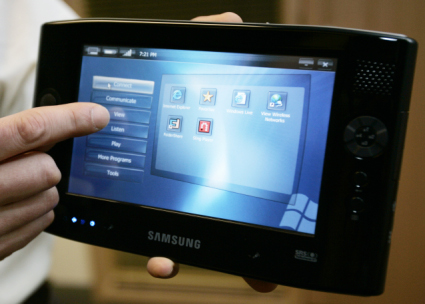
Samsung’s Q1 was the first “UMPC”
(Click to enlarge)
Whither UMPC?
In the 2.5 years since the Origami/UMPC device category emerged, dozens of devices have come to market from Samsung, Sony, Fujitsu, Asus, HTC, OQO, and others.
Unfortunately, however, their price points have gravitated toward (or above) the high end target price range for UMPCs ($500 to $1000), as processor speed, memory size, and hard drive capacity have ballooned. One contributor to this situation, of course, was Windows Vista’s seemingly insatiable appetite for ever-more CPU, RAM, and HDD resources.
A quick scan of currently available UMPCs, for example, turns up products ranging in price from $670 for Samsung’s Q1b, to about $1,000 for Asus’s R2H-BH059T-3, to approximately $1,500 for Fujitsu’s U2010, to roughly $1,500 for HTC’s Shift X9500, to over $2,000 for Sony’s Vaio UX490N.
With prices like these, it’s no wonder the UMPC hasn’t taken the consumer market by storm. In short, the UMPC — as envisioned by Microsoft’s latest “UMPC with Origami Experience” description — appears to have collapsed under the weight of unbridled feature creep.
Intel, meanwhile, quietly dropped UMPCs from its marketing initiatives, choosing instead to focus on two new categories of ultra-mobile devices as targets for its low-power Atom processors and associated chipsets. Intel dubs these “mobile Internet devices” (MIDs) and “netbooks.”
The MID: Intel’s better mousetrap
When you’re Intel and you dominate the consumer desktop and laptop PC market, which account for annual shipments of about 300 million processors, but have virtually no presence in the mobile phone market (Intel sold its mobile phone-oriented XScale processor business to Marvel in June of 2006), which now consumes over a billion processors annually, what do you do?
That’s right. Invent a new device category that targets the gap between mobile phones and notebook PCs, and uses Intel architecture (aka x86) processors.
So, early in 2007 Intel launched (PDF download) a new category of devices dubbed Mobile Internet Devices, aimed at letting connected consumers take a “full Internet experience” on-the-go. This contrasted with the limited web browsing capabilities of mobile phones at that time.
On its website, Intel currently suggests the following general features and specs for pocket-sized MIDs:
- Processor — Intel Atom
- Display — 4.5- to 6-inch LCD
- User input — touchscreen
- Functions provided:
- Web surfing
- Instant messenging
- VoIP
- High-definition video and audio
- Long battery life
- Built-in WiFi; WiMAX (future option)
- GPS (option)
- Operating system:
- Linux, from the Moblin project (or elsewhere)
- Windows (possible option)
So, how’s the MID market coming along?
Although ABI Research bullishly forecasts shipments of 50 million units annually by 2013, there appears to be little evidence that the MID market is really going anywhere.
In fact, about the only true MIDs to reach market appear to be Nokia’s N Series Internet Tablets. These devices, which debuted, some two years before Intel’s “invention” of the MID, have only met with limited success.
What’s more, few device vendors have followed Nokia over the MID cliff.
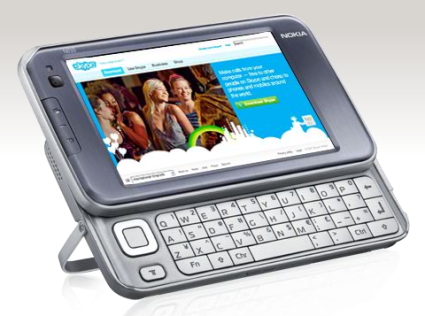
Nokia’s N-Series Internet Tablets were the first “MIDs”
Key specifications of the latest Nokia MID, the N810, include:
- Processor — 400MHz TI OMAP 2420
- System RAM — 128MB
- Flash storage memory — up to 2GB; miniSD/microSD expansion to 8GB
- Display — 4.1-inch WVGA (800 x 480 pixels)
- Connectivity:
- Bluetooth
- WiFi
- WiMAX version available
- USB
- Weight — one-half pound
- Dimensions — 5.0 x 2.8 x 0.6 inches
- Operating system — Linux
Why hasn’t the MID taken off?
The main problem is this: consumers who want on-the-go Internet already carry a mobile phone around with them, and perhaps also an iPod. They simply don’t want to lug around yet another device.
So in June of 2007 — just a few short months after Intel launched the MID device category — when Apple began shipping iPhones, the air was let out of the MID balloon.
RIP MID.
Enter the netbook
Recognizing the usatiated desire of consumers for an on-the-go mobile email and web access device, but at price-points significantly lower than what UMPCs seemed able to provide, Intel and Asus in June, 2007 jointly revealed an alternative to both UMPCs and MIDs. The “netbook,” exemplified by Asus’s Eee PC, debuted with models priced at $200 and $300.
Netbooks are essentially mini notebooks featuring with screen sizes from 5 to 10 inches, and powered by full-featured client operating systems such as Linux or Windows XP (not Windows CE). As their name implies, the devices are geared toward Internet-based functions, including web surfing, email, instant messaging, A/V content consumption, photo sharing, and social networking.
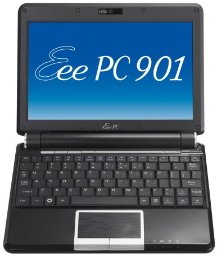
Asus’s Eee PCs were the first “netbooks”
Subsequent to the debut of the first Eee PC, Asus has greatly expanded its netbook line. Additionally, netbooks have now been introduced by Acer, Dell, Everex, Fujitsu, HP, Lenovo, MSI, Sylvania, and other lesser-known players. According to Digitimes, Japanese consumer electronics powerhouses NEC, Sony, and Toshiba reportedly will all enter the netbook market soon — presumably in time for the 2008 holiday shopping season.
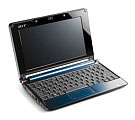
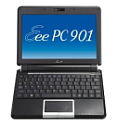

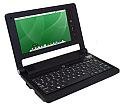
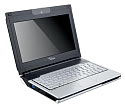
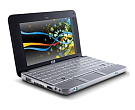

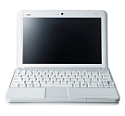
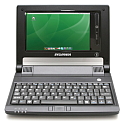
Representative netbooks from Acer, Asus, Dell, Everex, HP, Lenovo, MSI, and Sylvania
(Click each image to enlarge)
While Netbook specifications vary, Sylvania’s recently-announced G Netbook Meso offers an interesting example (although many netbooks use flash memory, rather than hard drives, for program and data storage):
- Processor/chipset:
- Intel Atom, clocked at 1.6GHz
- Intel 945 Express Graphics chipset
- RAM — 512MB or 1GB
- Storage — 80GB HDD
- Display — 8.9-inch LCD; 1024 x 600 resolution; LED backlit
- User input — hardware QWERTY keyboard
- WLAN/LAN:
- 802.11 b/g WiFi
- 10/100 Mbps Ethernet
- Audio — stereo speakers; audio in/out jacks
- Integrated webcam
- Other I/O ports — VGA port; 3x USB 2.0
- Expansion card slots — multi-card reader
- Physical:
- Dimensions — 9 x 7 x 1.25 inches
- Weight — 2.2 pounds
- OS options:
- Ubuntu Netbook Remix
- Windows XP Home Edition
Consulting the googlacle, it’s seen that netbook prices currently range from slightly below $300 for Asus’s entry-level Linux-based Eee PC; around $350 for entry-level models of both Acer’s Aspire one, Dell’s Inspiron Mini 9, and Sylvania’s G; $450 for Everex’s CloudBook CE1201V; and $550 for HP’s 2133. Not bad!
The lowest-priced models sport 7-inch screens and run Linux from flash, while higher-end models tend to provide bigger screens (up to 10 inches), offer more storage (including HDDs), and run Windows XP instead of Linux. The HP 2133, for example, has an 8.9-inch 1280 x 800 screen, packs a 120GB HDD, and (interestingly) runs a version of Novell’s SuSE Linux OS. Asus’s high-end Eee PC 1000H, meanwhile, is based on an Intel Atom N270 processor, has a 10-inch display, comes with an 80GB drive, and is offered with either Linux or Windows XP.
Naturally, Intel sees netbooks as way to drive demand for its recently introduced low-power, 45nm Atom processors and chipsets.
The bottom line
Netbooks provide all the features mobile connected consumers want in a convenient, easily-transportable package. The devices are great for surfing the web, checking email, communicating in real time using instant messaging or VoIP, and enjoying multimedia — all with minimal compromise relative to full-sized notebooks.
Comparison of basic UMPC, MID, and netbook features
| Feature | UMPC | MID | Netbook |
|---|---|---|---|
| Format | mini-tablet | mini-tablet | mini-notebook |
| Processor | 1-2GHz x86 | 500-750MHz x86, RISC | 800MHz -1.6 GHz x86 |
| RAM | 1-2 GB | 256-512MB | 512MB-2GB |
| Storage | 30-100 GB HDD |
1-2GB flash |
5-100GB flash or HDD |
| Screen size | 4-7 in. | 4-6 in. | 7-10 in. |
| Input method | Touchscreen | Touchscreen | Keyboard |
| Connectivity | WiFi, Bluetooth, USB | WiFi, Bluetooth, USB | WiFi, Bluetooth, USB |
| Expansion slots | SD card | microSD card | SD card |
| Operating system | Windows XP or Vista |
Linux | Linux or Windows XP |
| Primary applications | Browser, email, IM, VoIP, office, multimedia | Browser, email, IM, VoIP, multimedia | Browser, email, IM, VoIP, multimedia |
| Weight | 2 pounds | 0.5 pounds | 2-4 pounds |
| Dimensions | 7 x 9 x 1.25 in. | 3 x 5 x 0.6 in. | 7 x 9 x 1 in. |
| Price range | $750-1500 | $300-500 | $300-750

With dimensions around 9 x 7 x 1 inches, weights of roughly 2 pounds, screen sizes of 7-10 inches, and price tags starting below $300, netbooks provide a convenient, affordable means to stay connected and keep informed on the go. Plus, you don’t need a magnifying glass to browse standard web content, read emails, or view videos.
Comparing netbooks to the UMPC concept originally defined by Microsoft and Intel, it’s no wonder UMPCs have ended up in the scrap bin of device history. MIDs, meanwhile, fell victim to Apple’s excellent design and execution of the iPhone.
Not surprisingly, market analyst Gartner recently forecast stellar netbook market growth — reaching shipments of 8 million annually by 2009.


Interesting post, and nice blog 🙂
Too simplistic. Touchscreen technology will propel MIDs.
You can’t use a Netbook standing up. On the other side, the iPhone
is too small & slow for a decent MID. I should know, I’m using one
to type this comment & it’s taking FOREVER!
@james: Ok, so how about a “netpad” for stand-up use? Same basic, Internet-centric functionality as today’s netbooks but with 7- to 9-inch touchscreens and perhaps a few small navigation buttons instead of a netbook-style QWERTY keyboard. Priced similarly to the Eee PCs, i.e. from under $300.
The “netpad” idea seems to have a fair bit of merit. There are already those that have modded netbooks into tablets, and at least one company planning to sell conversion kits for the 700 series EEE PCs, and perhaps more models of the EEE PC line.
Personally, though, until flexible screens are consumer ready, 7″ is too big for carry around 100% of the time. I’m not fond of the Nokia ITs, at least the old 770. Having x86 compatibility helps more than Nokia or even NVidia seems to think. Until all web plugins are open sourced, the flexibility of x86 is of great usage even to web surfing. Good luck convincing Adobe to actually release the source, not just the specifications, to Flash. MIDs come pretty close, if they can just get them cheap enough to own along side a netbook.
Yet another reason for the ‘netpad’ concept: Just like the term ‘netbook’ ( http://www.psionplace.com/hardware/Psion-Netbook-2000-09-05-psion-psion-spec.html ) ‘Netpad’ was also coined by PSION as well ( http://www.bioeddie.co.uk/models/NetPad.html ), and is pretty close to your concept.
Regarding the MID, you’ve made the all-too-common mistake of spuriously extrapolating from a too-small sample or -brief snapshot in time. Obviously, the “killer application” for mobile devices doesn’t exist yet.
Moreover, the relatively larger screen sizes you tout for the “netbooks” provide lower utility because they suck more milliwatt-hours.
Your commentary is therefore intemperate/premature.
@tom61: see Adobe ‘OpenScreen’ initiative (http://www.adobe.com/openscreenproject/). This will more likely open flash player toward exotic environment. Flash has already been ported to non x86 environment, including cellphone.
I think you are being short sighted. The technology that allows a netbook to be made and sold for $300 to $500 dollars will be ported to the UMPC world too. (And upward into the full size notebook world also.) I see no reason that early next year you should not see UMPCs in the same price range. The deciding factor for success will be form factor. Keyboard or no keyboard, netbook or slider, stylus or finger. Eventually the guts will all be the same. Just my opinion.
Wow very informative and great post. I used to hang onto the term UMPC but now am coming to accept Netbook as a more suitable (and less syllabic) alternative. I like Gizmodo’s definition of Netbook being a fully featured computer with a small footprint of an 11″ screen or less. The only downside I can see to the Netbook term is it does not stress the portability that is the main striking appeal of these PCs.
I run a nice Netbook blog at http://www.electricvagabond.com if you are interested. I have started migrating to the Netbook terminology.
I agree with realtor on some points. It is already converging, no wonder the formfactor names are dissappearing/reinvented so quickly. In a matter of time both the iphone and netbook will converge into the happy medium we all want. The key, I think, is to dump the keyboard and finally find an alternate interface that works well; but for the meantime what would be real nice is a flexible screen (oled) that can be folded up/rolled up and stashed in my pocket– enough with these solid cases!
I’m posting this from a x9500. Very poor article. There is no difference between a umpc and “netbook” except for price. Infact my x9500 which you have listed as a umpc actually fills all the characteristics of a “netbook” and misses one for umpc(it runs at 800mhz and not 1ghz).
What was the main reason for buying the x9500 over the asus netbooks. Netbooks don’t have toch screens. It was that simple. I can use the umpc with out even revealing the keyboard